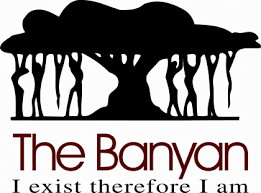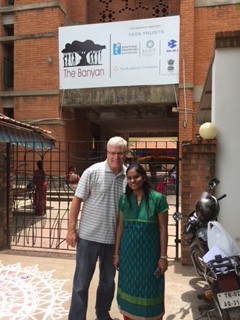
(9-23-16) I was not the most eloquent speaker during the three-day Conference on Justice and the Rights of Homeless Persons with Mental Health Issues that I attended in Chennai, India earlier this month.
An Indian woman, at times poking her finger in the air to emphasis her point, was far more persuasive — and I didn’t understand a word that she was saying because she was not speaking English.
I had an interpreter but even before her words were translated, I could tell from watching her and listening to her emotional inflections that her’s was a powerful testimony.
She had been one of the known 8,000 homeless Indians living on the streets of Chennai (population 4.6 million) when she was caught by the police trying to sell her baby son for a bowl of rice. She was psychotic and starving. Fortunately, the police delivered her to The Banyan, the city’s largest mental health service that rescues women, rather than locking her in jail.
Now fully recovered, she lives with her son in a rural area outside the city where she works as a Banyan trained social worker in small villages seeking out and helping women who have untreated mental illnesses and often have been driven from their homes.
Her story is typical of stories told to me by some of the more than 5,000 persons, mostly women, who have been able to recover and live independently because of The Banyan. The organization’s founding is as inspirational as each of those unique stories.
In 1993, two college students named Vandana Gopikumar and Vaishnavi Jayakumar, were leaving a classroom building when they spotted a half naked woman who appeared to have been beaten lying on the street. No one was helping her. She was delusional and when the then- 22 year old students approached her, she ran from them. Vandana and Vaishnavi followed her and eventually got her dressed. They began calling shelters in the city but none of them would accept her.
Did they give up? No, they took this woman home to their modest two bedroom apartment.
From that moment on, Vandana and Vaishnavi began to see other women in the streets who they’d never noticed before. They were homeless, mentally ill, and living in the shadows. Although neither student was from a wealthy family, they began bringing other women to their apartment until they had twenty living with them. By that point, they had spent all of their savings. With few options, they decided to contact a newspaper and begin soliciting funds for the women.
That was the beginning of The Banyan that now — 23 years later — has become a model for Indian mental health services. After the conference ended, I was able to tour three Banyan facilities. (Vandana also hosted a party for me at her home because I celebrated my birthday during the conference.) Those three facilities were part of five major projects The Banyan has initiated since Vandana and Vaishnavi first began bringing women home to live with them. Both students abandoned the careers that they were training for in college. And, incredibly, neither has ever taken a rupee of pay for their work at the Banyan. Everything that they have been given to them has been donated immediately to The Banyan.
“Through the years, those whom we cared for, our best teachers, taught us what it meant to be poor, sad, alienated and hopeless,” Vandana recently told Frontline magazine. “Their insights guided us as we developed a whole array of services and demonstrable models that helped reduce or alleviate distress.”
The Banyan’s five projects were developed to fill needs. They include: a transit care center for women rescued from the streets; community mental health clinics in the city and rural villages near Chennai; a residential facility for elderly women or women with severe mental illnesses who have been abandoned by their families; the Banyan Academy of Excellence in Mental Health that works with colleges to attract and teach students to become mental health social workers; and a shelter for homeless women with mental issues (including rape victims.)
“Little miracles here make changes in people’s lives,” Vandana is fond of saying.
The Adaikalam was the first project and is the most visible in Chennai. When I toured it, I was deeply moved by the scores of women who had been rescued from the streets where the average homeless individual survives on 75 cents per day. I was told that many of the women had been raped and beaten at some point before being brought to The Banyan. A large number of them were from what is called the Schedule Caste, which was previously known as the untouchables. According to Hindu mythology, the Ati Shudras (untouchables) were in the fifth category in the Varna System and were condemned to perform dirty and polluting jobs. They named themselves Dalits or Harijans (son of God).
While I was in India, the newspaper published a story about an untouchable whose wife had died. (You are born into a Caste for your entire life.) The village that he lived near refused to allow him to walk through it to where his wife was supposed to be cremated. Instead, he had to carry her body on his back for six kilometers (about four miles) around the outskirts of the village.
The only person lower than an untouchable, I was told, was an untouchable woman with a severe mental illness.
One of the first steps in helping a woman who is rescued from the street, Vandana explained to me, is helping them develop self-worth. They are not patients. They are people. People who matter and they are treated with respect. One worker told me that she had never asked any of the women in the shelter what caste they had been born into. In addition to using medication and other therapies to get these women’s mental disorders under control, The Banyan addresses their physical needs. Many of the women have contracted diseases from years of living on the streets. One woman had maggots on her scalp, not a few but hundreds. Others suffer from malnutrition. Many have lost most of their teeth.
Those who are able are taught skills, including weaving on looms. Even those with no training or education can help make wrapping paper by using large colorful stamps pressed onto the paper. These products are sold to help fund The Banyan’s projects. Another facility that I visited was a residential home to women, mostly elderly, who had been rejected by their families and had no place to live. At that facility, I asked a young woman giving me a tour why she would choose to become a low paid social worker rather than follow her peers who were in college preparing for jobs in the profitable IT sector (in Chennai, IT jobs appeared to be the most sought after.)
She told me that she had an aunt with mental illness.
Not everyone has been happy to see Vandana coming. A few years ago, she began visiting a state run mental hospital to learn if The Banyan might be able to form some sort of mutually beneficial cooperative with it. When she saw the horrific conditions there — patients kept naked on lice infested mats — she began to complain. She was chased from the facility by male employees armed with sticks — the same batons they used on unruly patients.
Despite all that The Banyan has achieved, it is not enough, Vandana told me. While officials put the number of homeless at 8,000 in Chennai, she suspects that number is much higher, possibly five times that number and the most abused and marginalized are women.
Much of Vandana’s time is spent raising money. It was something that she was embarrassed to do initially. Now, she feels that those who are more fortunate, especially Indian businesses, should feel obligated to help.
When I worked at the Washington Post, my close friend Walt Harrington wrote a magazine cover story about Bryan Stevenson, a Harvard trained black lawyer who had dedicated his career to defending death row inmates and children entrapped in the criminal justice system. (Bryan recently authored the New York Times bestseller, Just Mercy, and is the central character in my book, Circumstantial Evidence which describes how he saved a wrongly accused man from Alabama’s death row.)
Harrington began his story by recalling an ancient Jewish legend that says 36 righteous men wander the earth unknown even to each other doing good works. They are the Lamed-Vavnik or Tzadikim Nistarim and they are absolutely critical to existence of the human race because as long as they continue to exist, the anger of God is held back from earth for their sake.
Harrington theorized that Bryan Stevenson was one of those 36 righteous men.
After spending time with Vandana Gopikumar, I would argue that the legend is wrong. The 36 are not all men and I have had the opportunity in my life to not only know Bryan Stevenson, but another of the most righteous who is walking among us.
This 12 minute video will introduce you to Vandana, Vaishnavi, and The Banyan family. You can also visit The Banyan webpage and support it with a contribution.

Outside a Banyan rescue center in Chennai, India with social worker



